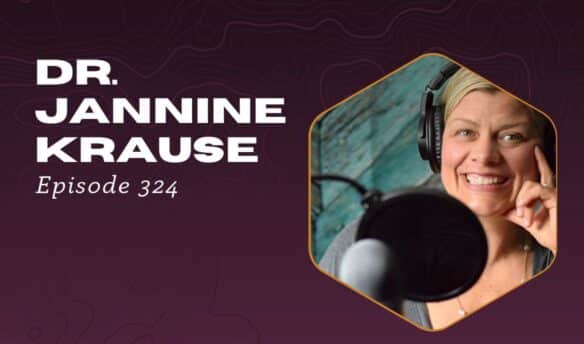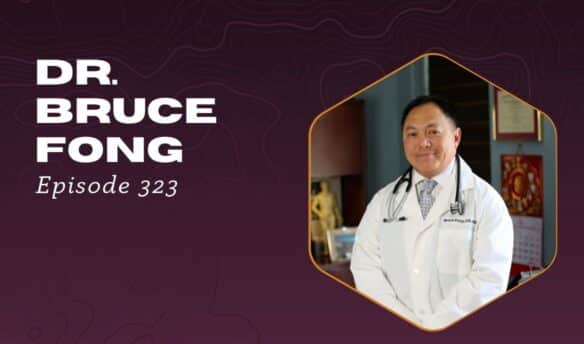When we think of the grocery store, usually we associate it with healthy food. Most would agree that grocery stores are for buying food to eat at home rather than going to a restaurant or a fast food drive-thru and that it’s a healthier and better option. However, if we aren’t careful, we end up making choices in the grocery store that aren’t much better for us. How? Grocery stores have evolved over the years along with the food industry. Food is processed and packaged now more than ever. Grocery shelves have turned into prime real estate for marketing products to consumers. It’s to the point that we can’t trust the front of the package anymore. To find the healthiest items on the shelf we need to look at the ingredients.
You Can’t Tell If it’s Health Food From the Front of the Packaging
Product packaging is all marketing now. From the fonts, to the images, to the labels they put on. Don’t fall for it! It’s a bit ironic – knowing that people have grown more health conscious, food companies are putting labels on their food such as “gluten free” and “all natural” to trick people into thinking their foods are healthier. Is it really, though? Not if it has a ton of sugar. Regardless of the label’s buzz words, junk food is still junk food. If you’re going to snack, an organic snack might be healthier, but that doesn’t mean you should make it your dinner.
Remember:
– Food can have a lot of sugar even if it’s labeled “natural” or if there’s maltodextrin, dextrose or high fructose corn syrup in the ingredients
– “Gluten free” doesn’t mean “calorie free”
– Sugars and fats can be organic but it doesn’t mean they’re healthy
– “Vegan” or “non-GMO” without certification is just marketing
Look at the Ingredients
Since we can’t trust the front of the package, we have to turn it around and check out the ingredient list. Here’s what to look for to find the healthiest options.
How long is the ingredient list?
The general rule to follow with ingredients is that less is best. With long ingredient lists full of complicated sounding names, you know you’re eating a food that’s been processed and altered in unnatural ways. If you can narrow down your options to foods with 3 or 5 ingredients or less, then the next steps would be to look at which has the healthier oils, if any are organic, and the product is non-GMO verified.
Do you recognize all the ingredients? Can you pronounce them?
If the answer is no, you probably shouldn’t eat it. Odds are, it’s a bunch of preservatives. Ingredients like BHT and BHA are stabilizers made to keep items on the shelf longer. What’s worrisome is that the stabilizers don’t lose their properties once the food is off the shelf. Studies show that preservatives are staying in our bodies, building up and lasting until after we die. Definitely some food for thought!
Other times, ingredient lists have three or four different types of sugar listed. Why? Because when most people read ingredients like barley malt, dextrose, maltose and rice syrup, they won’t realize what they’re actually reading is sugar, sugar and more sugar. The latest statistics show there are more than 60 names for sugar on food labels today. On top of that, there are artificial flavors and colors that are purely for aesthetic purposes and have no nutritional value whatsoever.
Keep it Simple – Eat Close to Nature
The best thing to do for optimal nutrition is to try to avoid packaged and processed foods altogether. Sticking with whole foods, simple and minimal ingredients will keep all the added sugar, preservatives, and artificial ingredients out of your diet. Watch where you shop – stick to outer edges of the market as a rule of thumb. Notice all of the isles in the middle of the store sell goods in cans and boxes? If you’re concerned about convenience, don’t worry. On the outer edges of the grocery stores there are fresh meats, cheeses, produce, even pasta and bread that make great lunch and dinner options.
Why is packaging such a big deal?
Sure, there are environmental benefits to using less, but there are health benefits too. Just like with ingredients, less packaging is better. Not only do we have to worry about ingredients in food, we have to worry about the chemicals involved in packaging our food. If you must buy something in a can or bottle, look for a label that says “BPA Free Lining.” BPA has been used since the 60’s for the lining of cans and bottles, amongst other things. Although the FDA claims humans are exposed to such low amounts that health is no concern, BPA is known to be an endocrine disruptor. It messes with hormones in both men and women, with exposure being linked to fertility issues, diabetes, thyroid conditions and other health issues.
Watch Out for the Sneaky Foods
These are the hot button foods that always come up in conversations about eating healthy. Since each one could be a blog post in itself, here are quick bits to know:
– Bread – Not everyone has a gluten sensitivity, but wheat affects us all. Look for Einkorn wheat.
– Oils – Avoid vegetable and hydrogenated oils. Expeller pressed oils in non-fried items are best.
– Condiments – Usually high in sugar and carbs, easy to sneak in an otherwise healthy diet.
– High fructose corn syrup – Just say no! It’s so sweet our bodies get addicted to it.
Do What You Can to Eat Healthy
Eating healthy is a journey for most people. Reading all of the food labels in your pantry might be an overwhelming experience. It’s important to remember that no one expects you to be perfect all the time. Everyone likes a yummy snack every once in a while. Developing a healthy lifestyle is all about making small, deliberate healthy choices starting where you’re currently at. For many of us, our journey can start at the grocery store. For better health, find out what’s really in your food and learn the healthiest options.
This post is a summary of a podcast on this very topic – listen in by clicking here!
youtube





